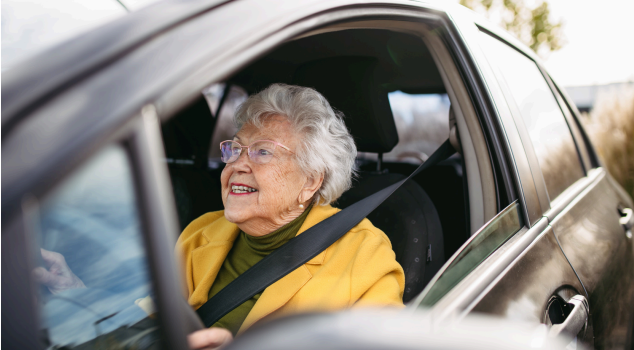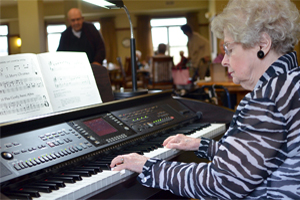As people age, various changes can affect their ability to drive safely, yet many value the independence that driving offers. Recognizing these changes in health and abilities is essential for ensuring a loved one’s safety behind the wheel. Here are some tips for keeping elderly drivers safe while helping them maintain their independence:
1. Get Regular Health and Vision Checkups:
Aging can impact several factors essential for driving, such as joint flexibility, vision, hearing, and reaction time. Additionally, certain medications may impair driving ability. Encourage regular medical checkups to monitor these changes.
Hearing and vision are particularly critical for safe driving. Hearing loss, which can make it difficult to detect important sounds like horns or sirens, becomes more common with age. Regular hearing tests after age 50 are advisable, especially for those with risk factors for hearing loss. Similarly, vision tends to decline with age, making it harder to see peripherally or read road signs and signals. Night driving can also become more challenging, and glare from the sun at certain times of day can reduce visibility. Many states require seniors to pass an eye exam when renewing their driver’s license. It’s also important to discuss with a doctor whether any medications might affect vision, cognition, or reaction time. And certain medications can cause drowsiness, which increases the risk of accidents.
2. Keep the Vehicle in Good Condition:
Modifications can be made to vehicles to better suit older drivers’ needs, such as installing a swivel seat, hand controls, or a pedal extender. Advanced safety features like lane departure warnings, blind-spot signals, and automatic emergency braking can also enhance safety. Keeping the vehicle in good working order is crucial, as well-maintained vehicles with modern safety features can help older drivers react to hazards more effectively. Whenever possible, choose cars with automatic transmission, power steering, and large mirrors to support easier and safer driving.
3. Assess Cognitive and Physical Abilities:
Cognitive decline, such as that caused by dementia or other neurological disorders, can severely impact driving ability. Physical conditions, including arthritis or limited mobility, can affect a driver’s ability to steer, brake, and monitor their surroundings. Physical therapy aimed at improving mobility can enhance driving skills for some seniors.
Discussing cognitive and physical limitations with older adults can be sensitive, as many fear losing their independence if they are asked to stop driving. To ensure the right decision is made, a professional evaluation of driving ability may be helpful. This can provide an objective assessment of whether it is safe for the senior to continue driving and how to keep elderly drivers safe.
4. Monitor Their Driving Performance:
Regularly accompanying elderly loved ones while they drive can provide insight into their current abilities. Pay attention to signs of unsafe driving, such as difficulty merging, delayed reaction times, or ignoring traffic signals. If these behaviors become consistent, it may be time for a professional evaluation of their driving skills to determine whether they are still safe behind the wheel.
Conclusion:
Aging doesn’t have to mean giving up the freedom and independence that driving provides, but it does require steps to ensure safety. By encouraging regular health checkups, keeping vehicles equipped with modern safety features, and addressing cognitive or physical challenges, families can support their elderly loved ones in maintaining their driving independence for as long as possible.
Monitoring driving performance and having open, respectful conversations about any concerns can make the transition smoother if changes become necessary. When driving is no longer safe, exploring other transportation options, such as rideshares, senior transit programs, or family support is required.
Balancing safety with independence is key to maintaining confidence and well-being in elderly drivers, allowing them to enjoy driving while protecting themselves and others on the road.






